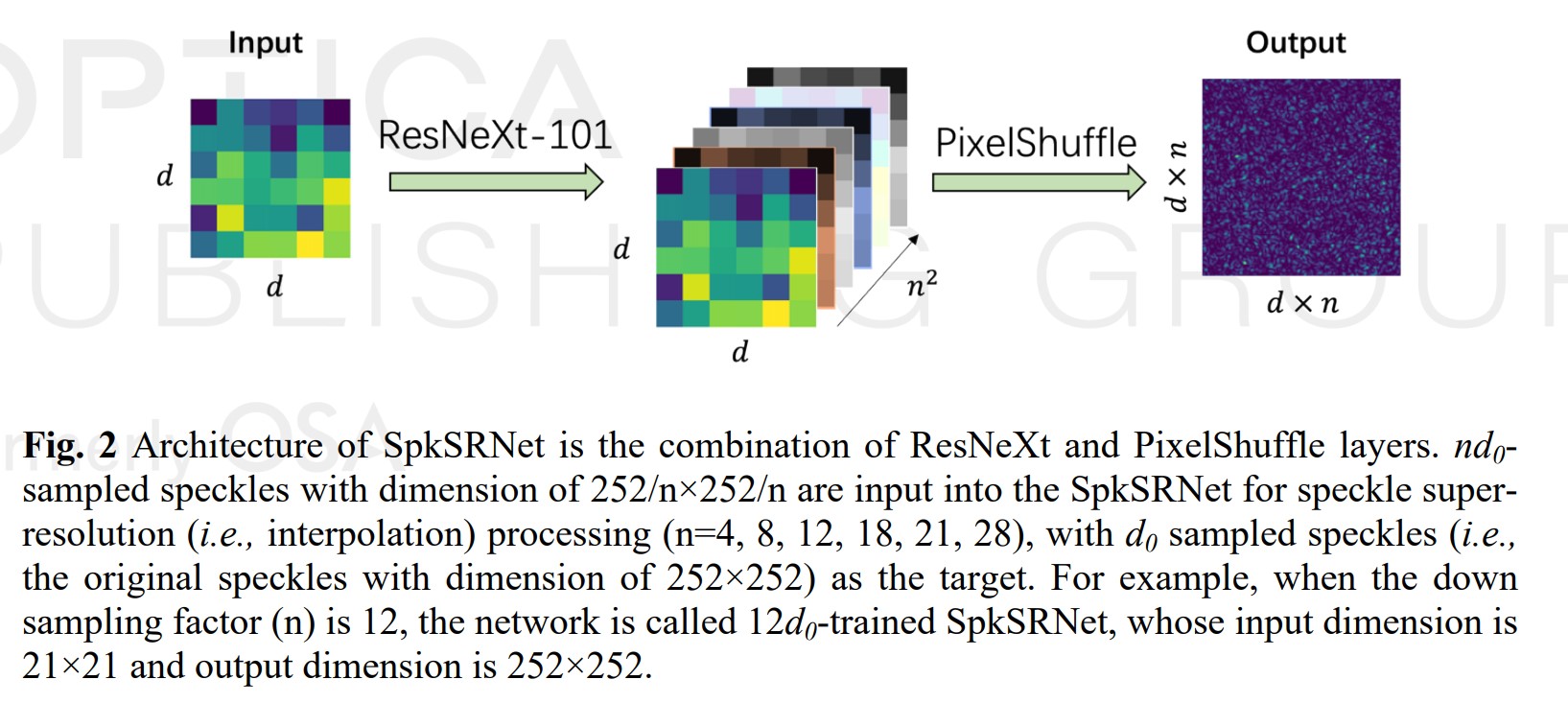Learning-based super-resolution interpolation for sub-Nyquist sampled laser speckles
Author: Huanhao Li†, Zhipeng Yu†, Qi Zhao†, Yunqi Luo, Shengfu Cheng, Tianting Zhong, Chi Man Woo, Honglin Liu, Lihong V. Wang, Yuanjin Zheng, Puxiang Lai*
Corresponding author: Lihong V. Wang* (Caltech Optical Imaging Laboratory, Andrew and Peggy Cherng Department of Medical Engineering, California Institute of Technology) LVW@caltech.edu
Corresponding author: Yuanjin Zheng* (School of Electrical and Electronics Engineering, Nanyang Technological University) yjzheng@ntu.edu.sg
Corresponding author: Puxiang Lai* (Department of Biomedical Engineering, Hong Kong Polytechnic University) puxiang.lai@polyu.edu.hk
Abstract: Information retrieval from visually random optical speckle patterns is desired in many scenarios yet considered challenging. It requires accurate understanding or mapping of the multiple scattering process, or reliable capability to reverse or compensate for the scattering-induced phase distortions. In whatever situation, effective resolving and digitization of speckle patterns are necessary. Nevertheless, on some occasions, to increase the acquisition speed and/or signal-to-noise ratio (SNR), speckles captured by cameras are inevitably sampled in the sub-Nyquist domain via pixel binning (one camera pixel contains multiple speckle grains) due to finite size or limited bandwidth of photosensors. Such a down sampling process is irreversible; it undermines the fine structures of speckle grains and hence the encoded information, preventing successful information extraction. To retrace the lost information, super resolution interpolation for such sub-Nyquist sampled speckles is needed. In this work, a deep neural network, namely SpkSRNet, is proposed to effectively upsample speckles that are sampled below 1/10 of the Nyquist criterion to well resolved ones that not only resemble the comprehensive morphology of original speckles (decompose multiple speckle grains from one camera pixel) but also recover the lost complex information (human face in this study) with high fidelity under normal and low light conditions, which is impossible with classic interpolation methods. These successful speckle super-resolution interpolation demonstrations are essentially enabled by the strong implicit correlation among speckle grains, which is non-quantifiable but could be discovered by the well-trained network. With further engineering, the proposed learning platform may benefit many scenarios that are physically inaccessible, enabling fast acquisition of speckles with sufficient SNR and opening up new avenues for seeing big and seeing clearly simultaneously in complex scenarios._

Architecture of SpkSRNet is the combination of ResNeXt and PixelShuffle layers. nd0-sampled speckles with dimension of 252/n×252/n are input into the SpkSRNet for speckle super resolution (i.e., interpolation) processing (n=4, 8, 12, 18, 21, 28), with d0 sampled speckles (i.e., the original speckles with dimension of 252×252) as the target. For example, when the down sampling factor (n) is 12, the network is called 12d0-trained SpkSRNet, whose input dimension is 21×21 and output dimension is 252×252.